【实例简介】Rust in Action
【实例截图】


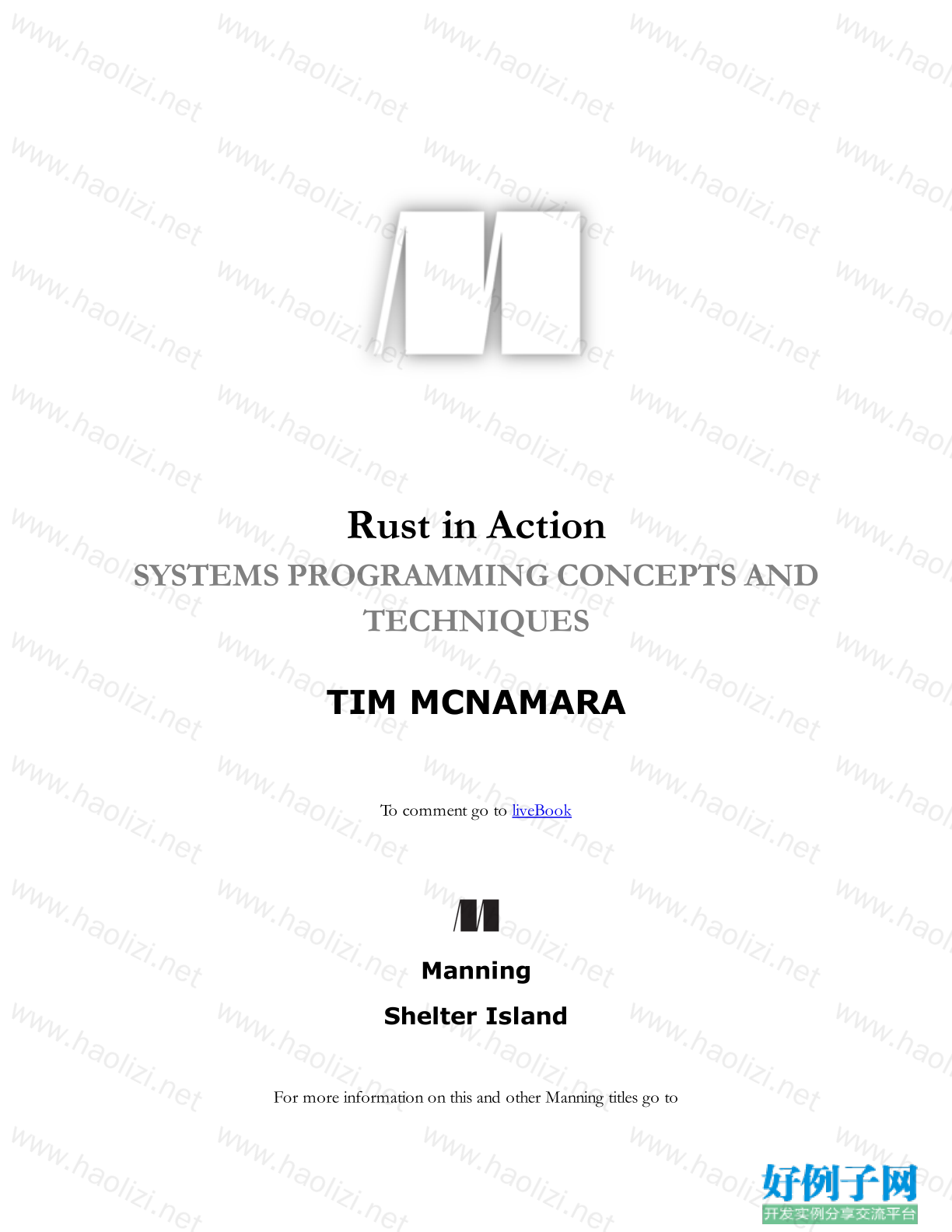



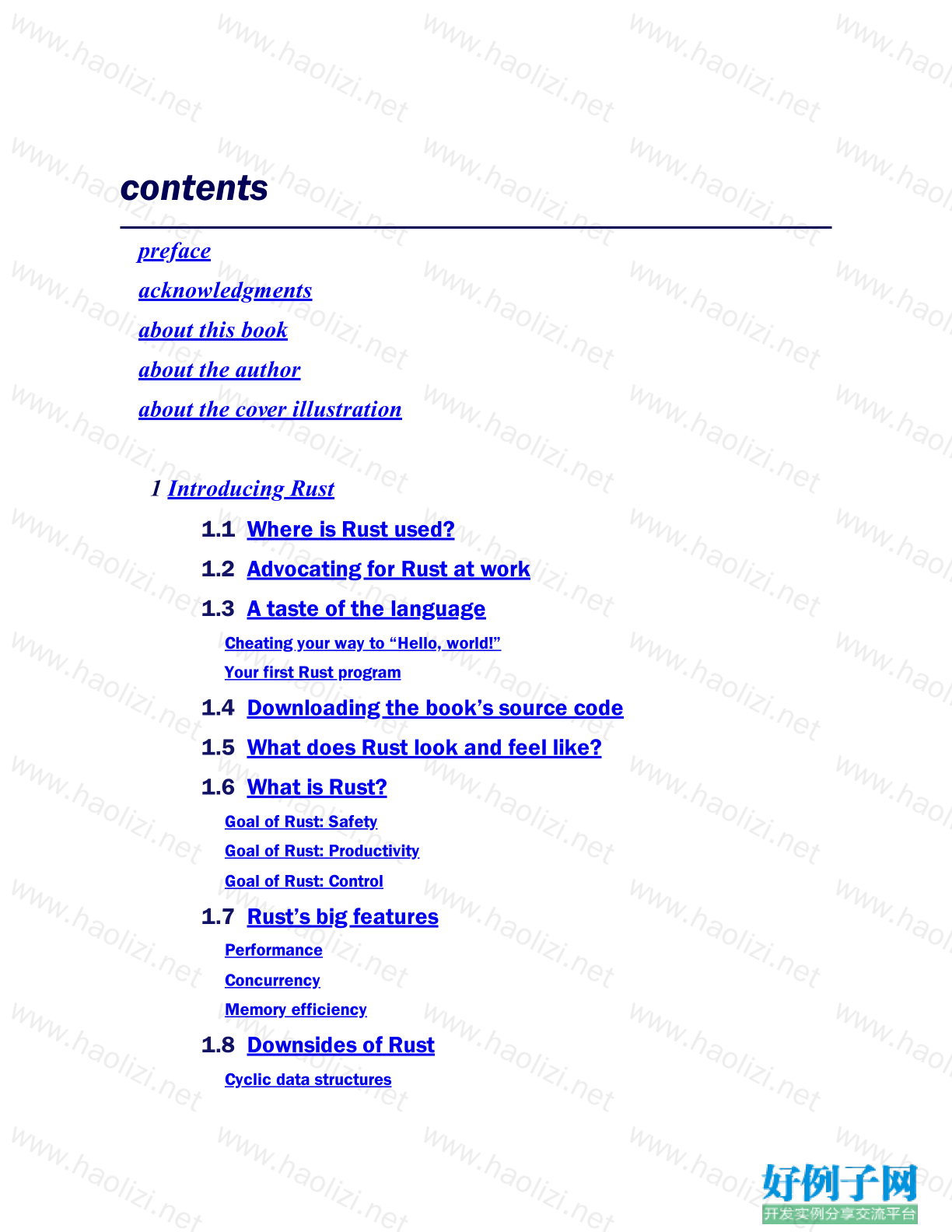
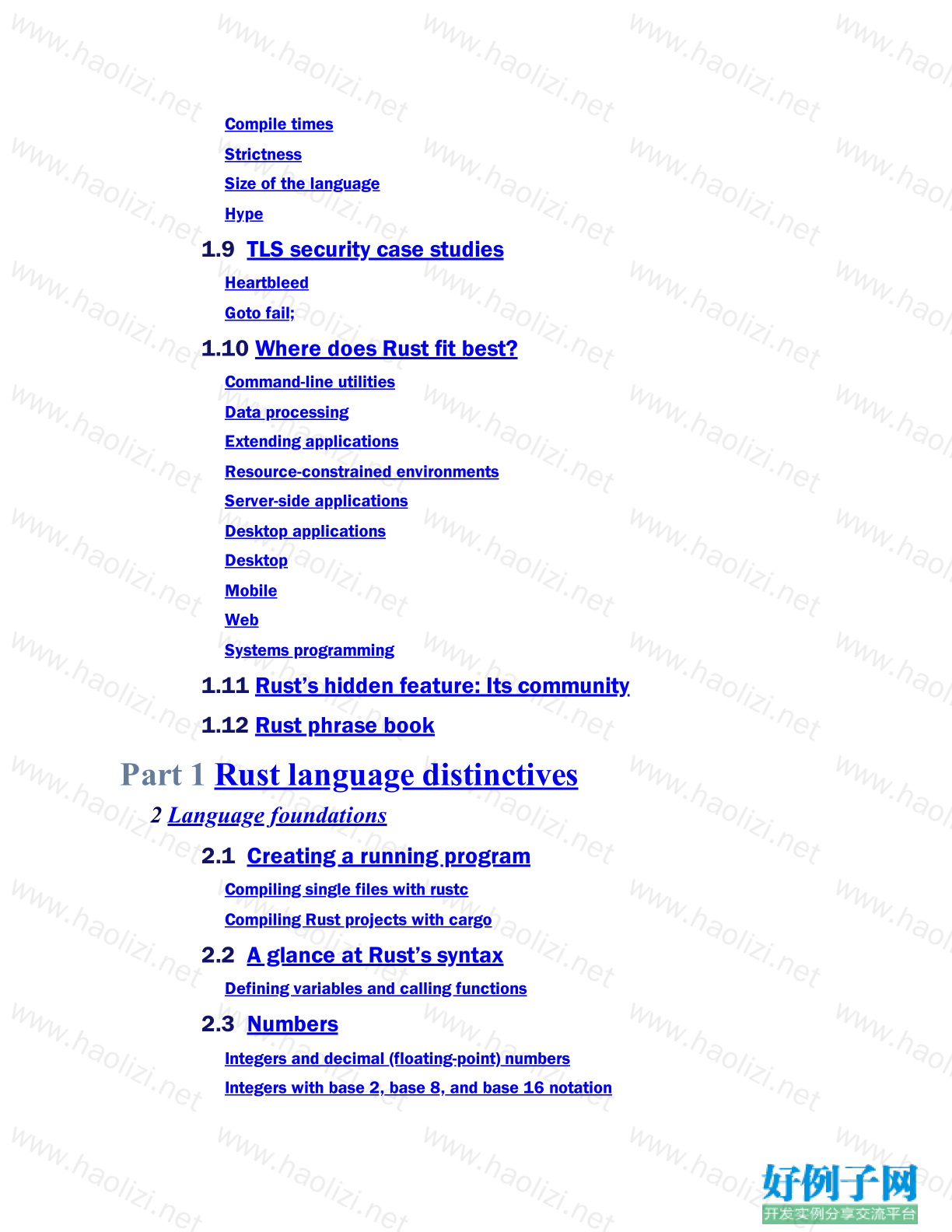
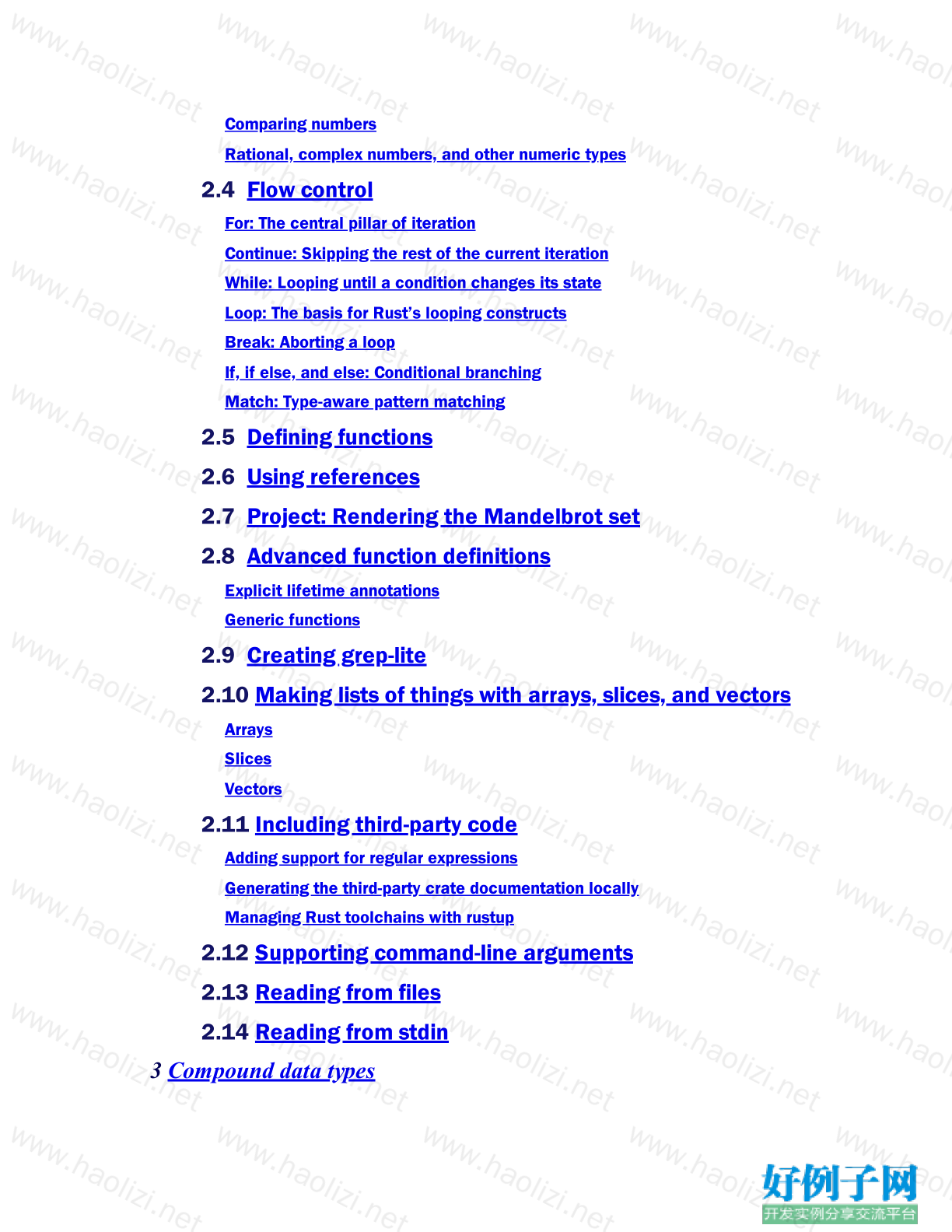
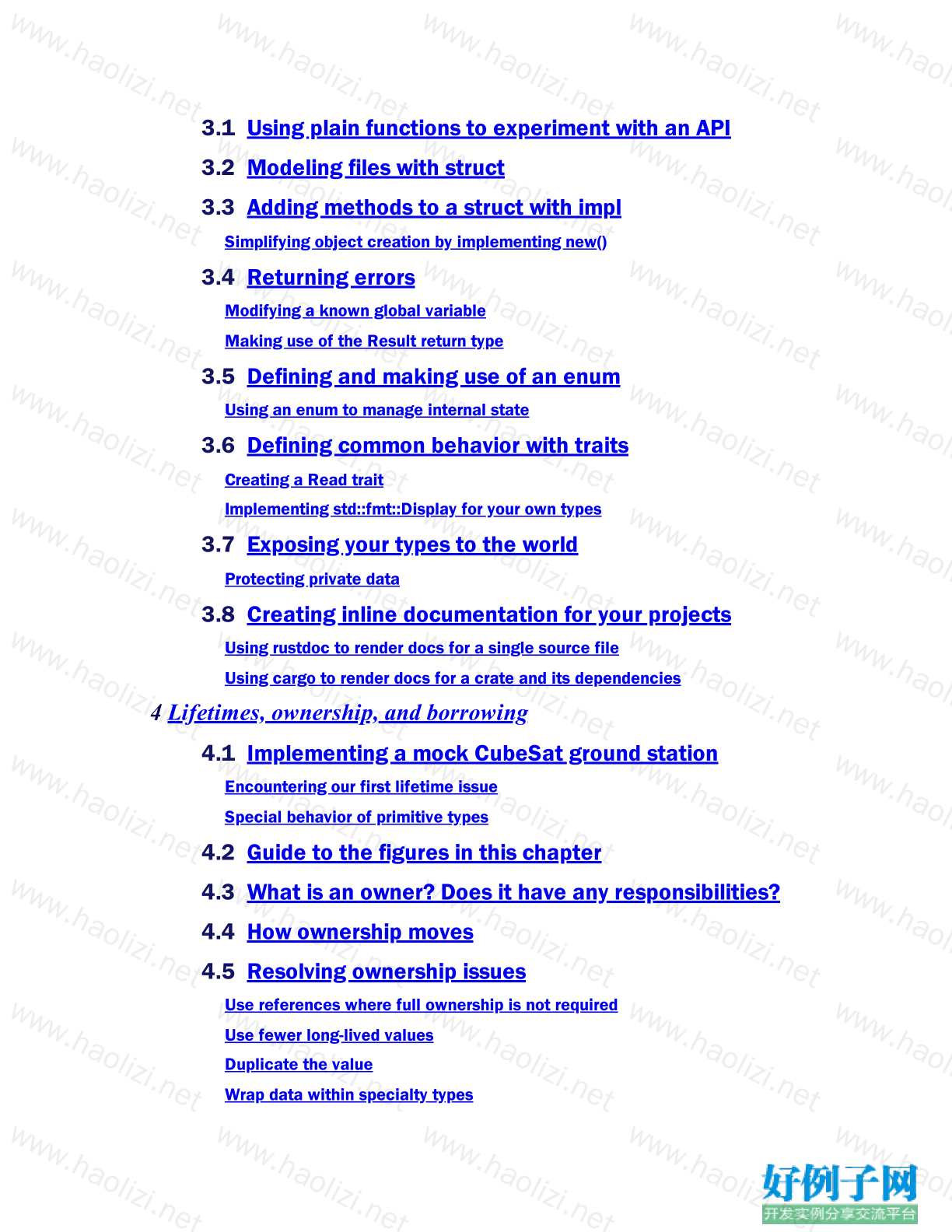
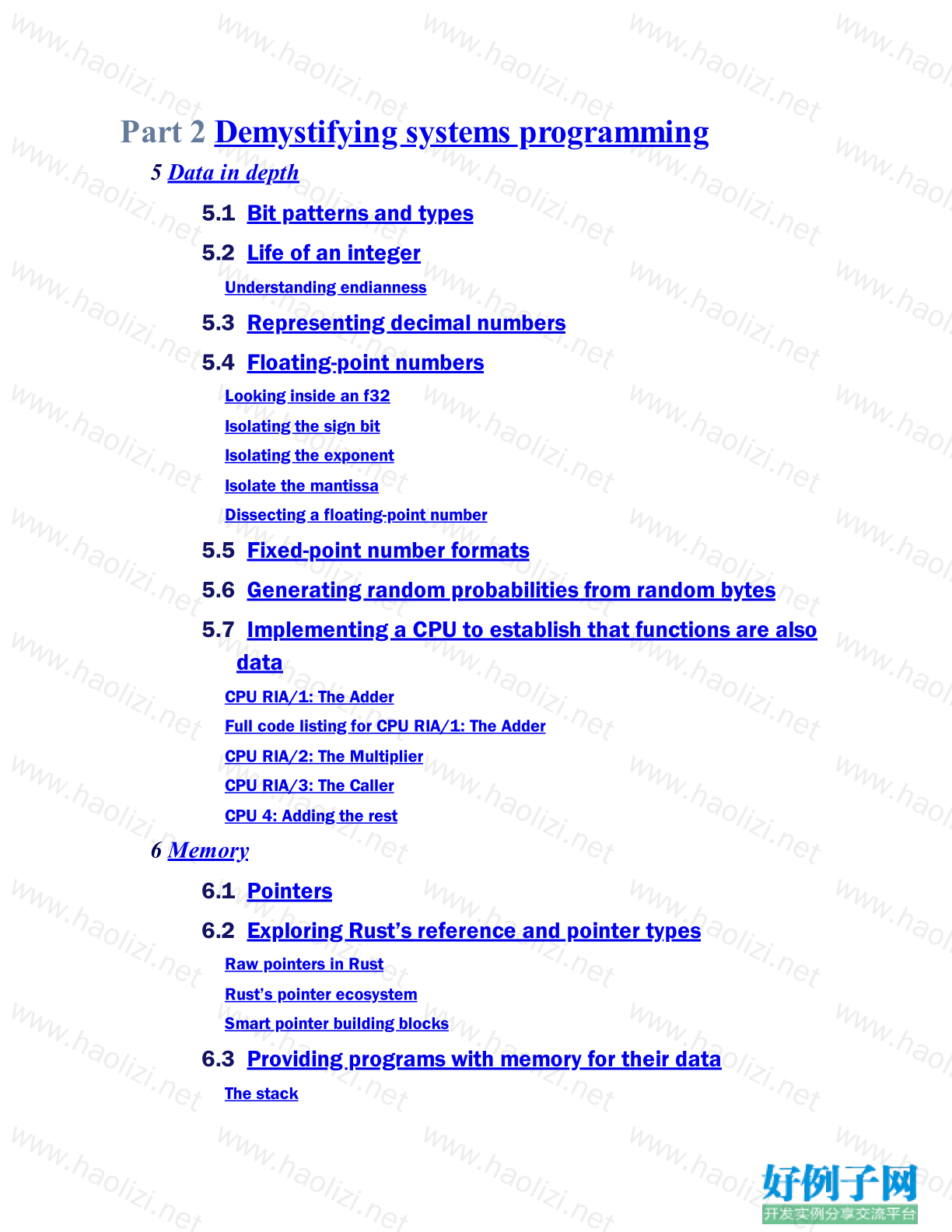
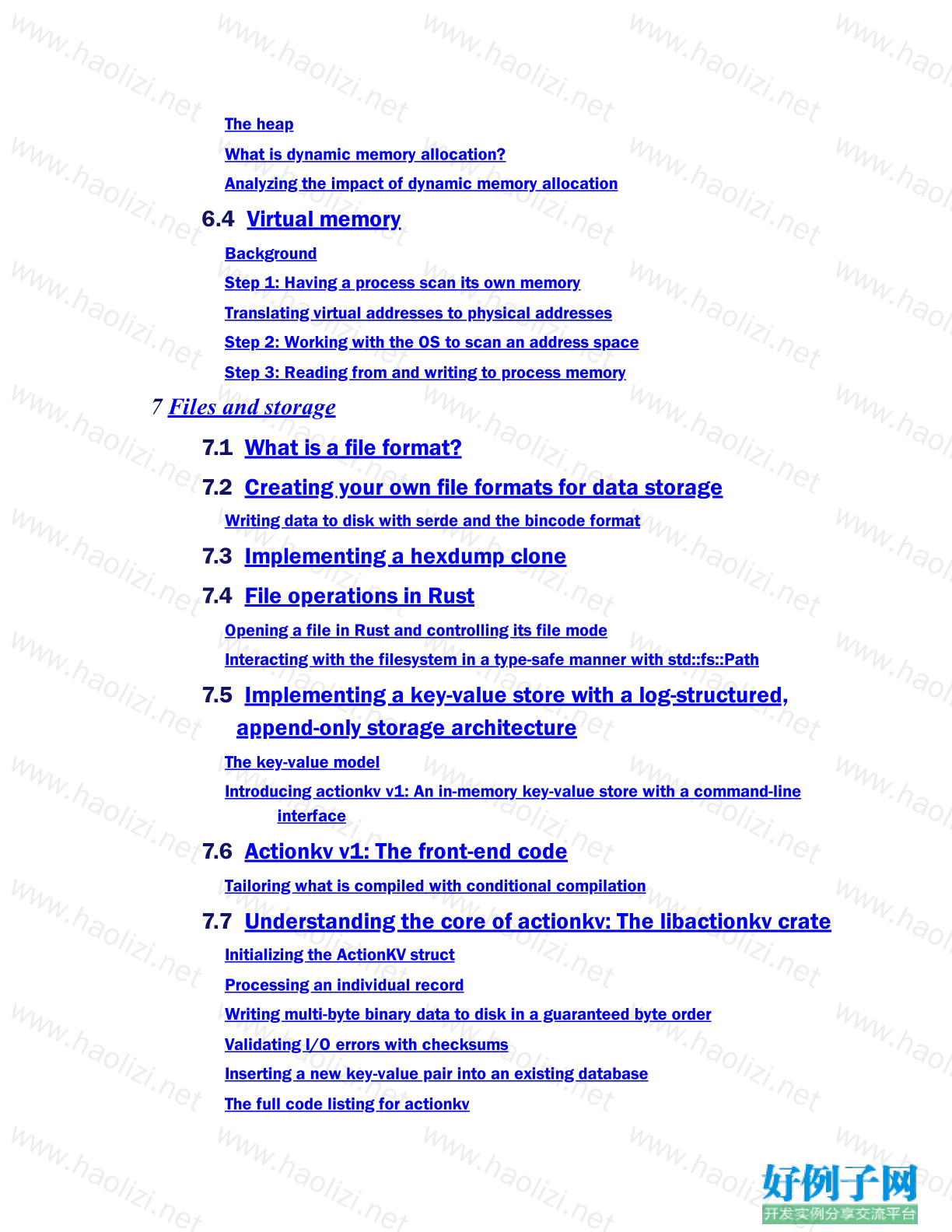
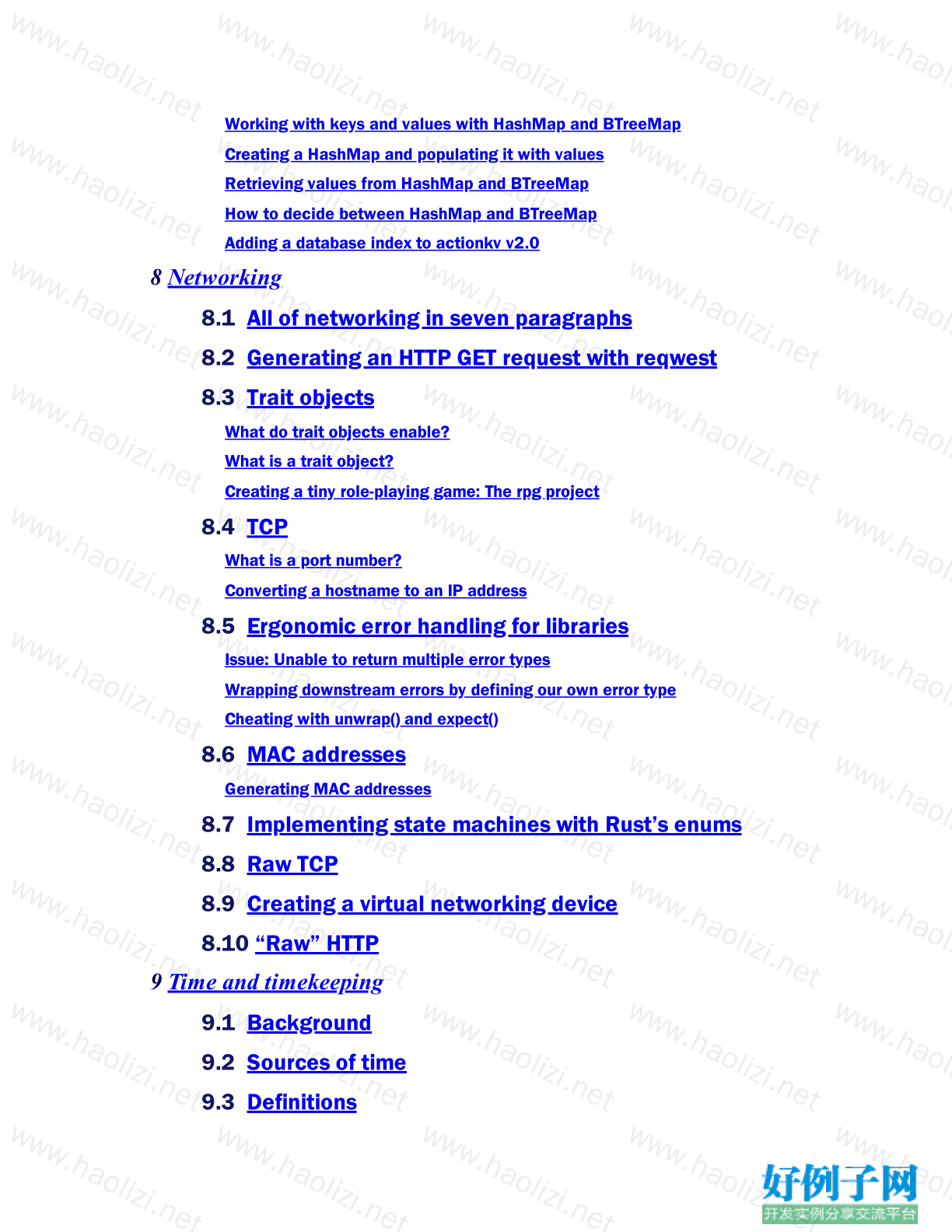
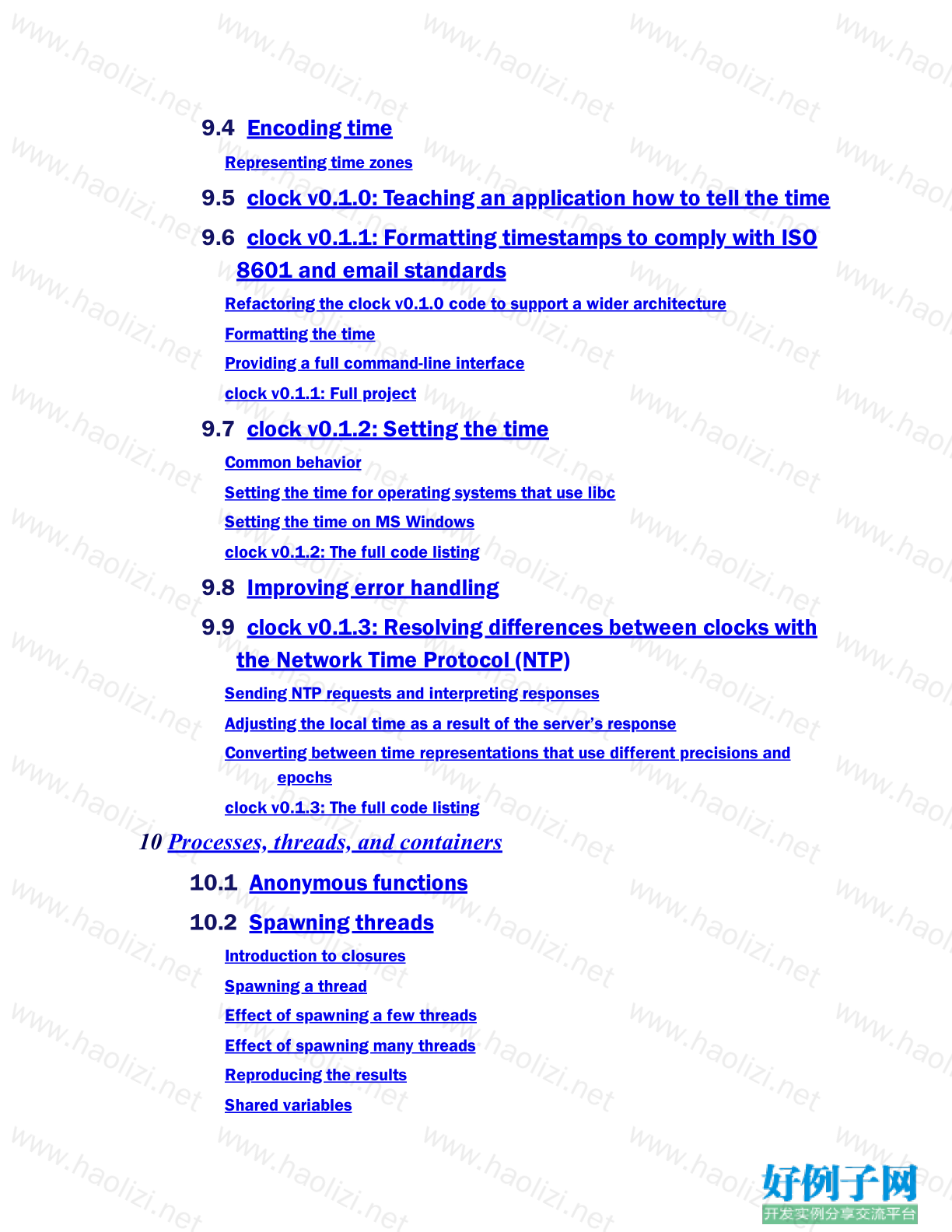
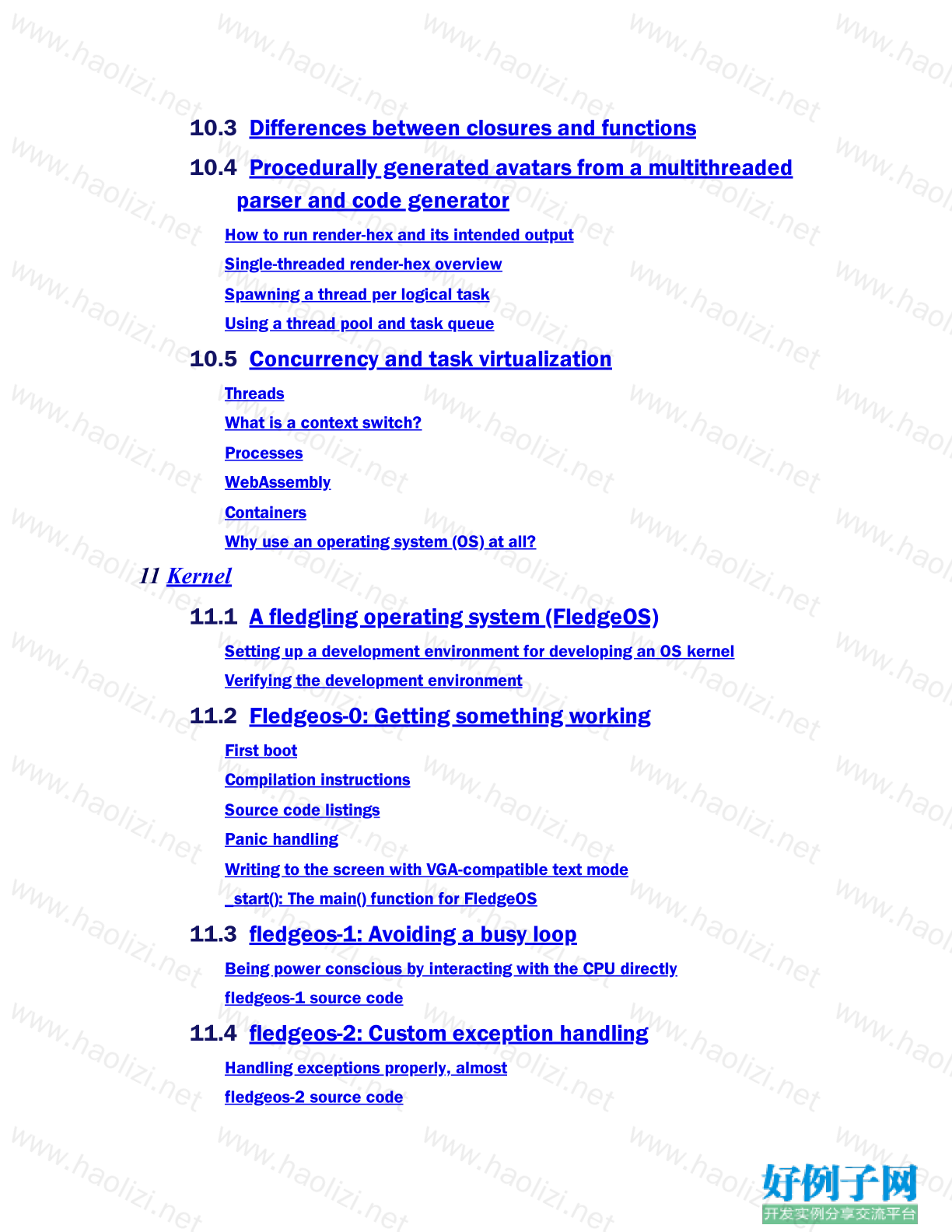
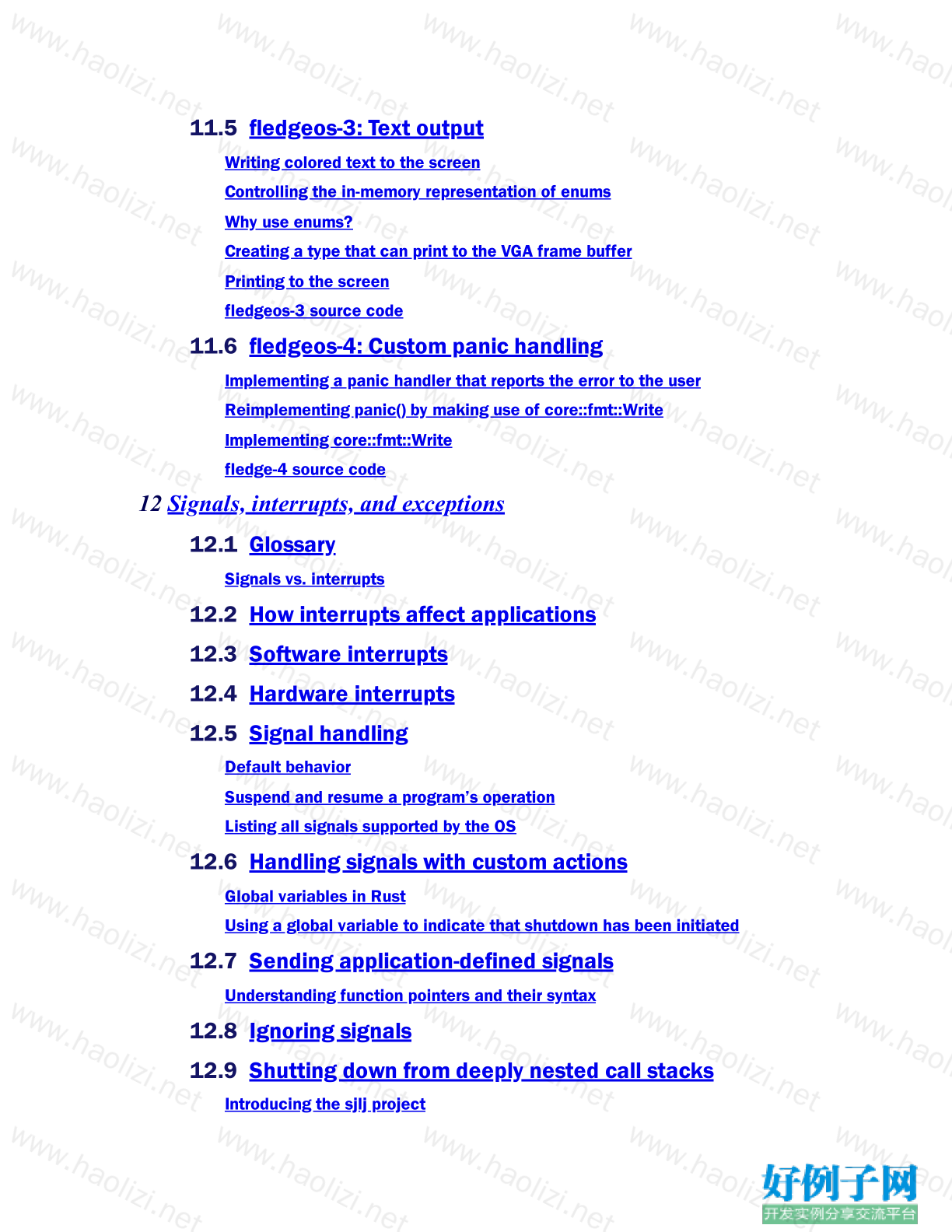

【核心代码】
contents
preface
acknowledgments
about this book
about the author
about the cover illustration
1 Introducing Rust
1.1 Where is Rust used?
1.2 Advocating for Rust at work
1.3 A taste of the language
Cheating your way to “Hello, world!”
Your first Rust program
1.4 Downloading the book’s source code
1.5 What does Rust look and feel like?
1.6 What is Rust?
Goal of Rust: Safety
Goal of Rust: Productivity
Goal of Rust: Control
1.7 Rust’s big features
Performance
Concurrency
Memory efficiency
1.8 Downsides of Rust
Cyclic data structuresCompile times
Strictness
Size of the language
Hype
1.9 TLS security case studies
Heartbleed
Goto fail;
1.10 Where does Rust fit best?
Command-line utilities
Data processing
Extending applications
Resource-constrained environments
Server-side applications
Desktop applications
Desktop
Mobile
Web
Systems programming
1.11 Rust’s hidden feature: Its community
1.12 Rust phrase book
Part 1 Rust language distinctives
2 Language foundations
2.1 Creating a running program
Compiling single files with rustc
Compiling Rust projects with cargo
2.2 A glance at Rust’s syntax
Defining variables and calling functions
2.3 Numbers
Integers and decimal (floating-point) numbers
Integers with base 2, base 8, and base 16 notationComparing numbers
Rational, complex numbers, and other numeric types
2.4 Flow control
For: The central pillar of iteration
Continue: Skipping the rest of the current iteration
While: Looping until a condition changes its state
Loop: The basis for Rust’s looping constructs
Break: Aborting a loop
If, if else, and else: Conditional branching
Match: Type-aware pattern matching
2.5 Defining functions
2.6 Using references
2.7 Project: Rendering the Mandelbrot set
2.8 Advanced function definitions
Explicit lifetime annotations
Generic functions
2.9 Creating grep-lite
2.10 Making lists of things with arrays, slices, and vectors
Arrays
Slices
Vectors
2.11 Including third-party code
Adding support for regular expressions
Generating the third-party crate documentation locally
Managing Rust toolchains with rustup
2.12 Supporting command-line arguments
2.13 Reading from files
2.14 Reading from stdin
3 Compound data types 3.1 Using plain functions to experiment with an API
3.2 Modeling files with struct
3.3 Adding methods to a struct with impl
Simplifying object creation by implementing new()
3.4 Returning errors
Modifying a known global variable
Making use of the Result return type
3.5 Defining and making use of an enum
Using an enum to manage internal state
3.6 Defining common behavior with traits
Creating a Read trait
Implementing std::fmt::Display for your own types
3.7 Exposing your types to the world
Protecting private data
3.8 Creating inline documentation for your projects
Using rustdoc to render docs for a single source file
Using cargo to render docs for a crate and its dependencies
4 Lifetimes, ownership, and borrowing
4.1 Implementing a mock CubeSat ground station
Encountering our first lifetime issue
Special behavior of primitive types
4.2 Guide to the figures in this chapter
4.3 What is an owner? Does it have any responsibilities?
4.4 How ownership moves
4.5 Resolving ownership issues
Use references where full ownership is not required
Use fewer long-lived values
Duplicate the value
Wrap data within specialty typesPart 2 Demystifying systems programming
5 Data in depth
5.1 Bit patterns and types
5.2 Life of an integer
Understanding endianness
5.3 Representing decimal numbers
5.4 Floating-point numbers
Looking inside an f32
Isolating the sign bit
Isolating the exponent
Isolate the mantissa
Dissecting a floating-point number
5.5 Fixed-point number formats
5.6 Generating random probabilities from random bytes
5.7 Implementing a CPU to establish that functions are also
data
CPU RIA/1: The Adder
Full code listing for CPU RIA/1: The Adder
CPU RIA/2: The Multiplier
CPU RIA/3: The Caller
CPU 4: Adding the rest
6 Memory
6.1 Pointers
6.2 Exploring Rust’s reference and pointer types
Raw pointers in Rust
Rust’s pointer ecosystem
Smart pointer building blocks
6.3 Providing programs with memory for their data
The stackThe heap
What is dynamic memory allocation?
Analyzing the impact of dynamic memory allocation
6.4 Virtual memory
Background
Step 1: Having a process scan its own memory
Translating virtual addresses to physical addresses
Step 2: Working with the OS to scan an address space
Step 3: Reading from and writing to process memory
7 Files and storage
7.1 What is a file format?
7.2 Creating your own file formats for data storage
Writing data to disk with serde and the bincode format
7.3 Implementing a hexdump clone
7.4 File operations in Rust
Opening a file in Rust and controlling its file mode
Interacting with the filesystem in a type-safe manner with std::fs::Path
7.5 Implementing a key-value store with a log-structured,
append-only storage architecture
The key-value model
Introducing actionkv v1: An in-memory key-value store with a command-line
interface
7.6 Actionkv v1: The front-end code
Tailoring what is compiled with conditional compilation
7.7 Understanding the core of actionkv: The libactionkv crate
Initializing the ActionKV struct
Processing an individual record
Writing multi-byte binary data to disk in a guaranteed byte order
Validating I/O errors with checksums
Inserting a new key-value pair into an existing database
The full code listing for actionkvWorking with keys and values with HashMap and BTreeMap
Creating a HashMap and populating it with values
Retrieving values from HashMap and BTreeMap
How to decide between HashMap and BTreeMap
Adding a database index to actionkv v2.0
8 Networking
8.1 All of networking in seven paragraphs
8.2 Generating an HTTP GET request with reqwest
8.3 Trait objects
What do trait objects enable?
What is a trait object?
Creating a tiny role-playing game: The rpg project
8.4 TCP
What is a port number?
Converting a hostname to an IP address
8.5 Ergonomic error handling for libraries
Issue: Unable to return multiple error types
Wrapping downstream errors by defining our own error type
Cheating with unwrap() and expect()
8.6 MAC addresses
Generating MAC addresses
8.7 Implementing state machines with Rust’s enums
8.8 Raw TCP
8.9 Creating a virtual networking device
8.10 “Raw” HTTP
9 Time and timekeeping
9.1 Background
9.2 Sources of time
9.3 Definitions 9.4 Encoding time
Representing time zones
9.5 clock v0.1.0: Teaching an application how to tell the time
9.6 clock v0.1.1: Formatting timestamps to comply with ISO
8601 and email standards
Refactoring the clock v0.1.0 code to support a wider architecture
Formatting the time
Providing a full command-line interface
clock v0.1.1: Full project
9.7 clock v0.1.2: Setting the time
Common behavior
Setting the time for operating systems that use libc
Setting the time on MS Windows
clock v0.1.2: The full code listing
9.8 Improving error handling
9.9 clock v0.1.3: Resolving differences between clocks with
the Network Time Protocol (NTP)
Sending NTP requests and interpreting responses
Adjusting the local time as a result of the server’s response
Converting between time representations that use different precisions and
epochs
clock v0.1.3: The full code listing
10 Processes, threads, and containers
10.1 Anonymous functions
10.2 Spawning threads
Introduction to closures
Spawning a thread
Effect of spawning a few threads
Effect of spawning many threads
Reproducing the results
Shared variables10.3 Differences between closures and functions
10.4 Procedurally generated avatars from a multithreaded
parser and code generator
How to run render-hex and its intended output
Single-threaded render-hex overview
Spawning a thread per logical task
Using a thread pool and task queue
10.5 Concurrency and task virtualization
Threads
What is a context switch?
Processes
WebAssembly
Containers
Why use an operating system (OS) at all?
11 Kernel
11.1 A fledgling operating system (FledgeOS)
Setting up a development environment for developing an OS kernel
Verifying the development environment
11.2 Fledgeos-0: Getting something working
First boot
Compilation instructions
Source code listings
Panic handling
Writing to the screen with VGA-compatible text mode
_start(): The main() function for FledgeOS
11.3 fledgeos-1: Avoiding a busy loop
Being power conscious by interacting with the CPU directly
fledgeos-1 source code
11.4 fledgeos-2: Custom exception handling
Handling exceptions properly, almost
fledgeos-2 source code11.5 fledgeos-3: Text output
Writing colored text to the screen
Controlling the in-memory representation of enums
Why use enums?
Creating a type that can print to the VGA frame buffer
Printing to the screen
fledgeos-3 source code
11.6 fledgeos-4: Custom panic handling
Implementing a panic handler that reports the error to the user
Reimplementing panic() by making use of core::fmt::Write
Implementing core::fmt::Write
fledge-4 source code
12 Signals, interrupts, and exceptions
12.1 Glossary
Signals vs. interrupts
12.2 How interrupts affect applications
12.3 Software interrupts
12.4 Hardware interrupts
12.5 Signal handling
Default behavior
Suspend and resume a program’s operation
Listing all signals supported by the OS
12.6 Handling signals with custom actions
Global variables in Rust
Using a global variable to indicate that shutdown has been initiated
12.7 Sending application-defined signals
Understanding function pointers and their syntax
12.8 Ignoring signals
12.9 Shutting down from deeply nested call stacks
Introducing the sjlj projectSetting up intrinsics in a program
Casting a pointer to another type
Compiling the sjlj project
sjlj project source code
12.10 A note on applying these techniques to platforms
without signals
12.11 Revising exceptions
index




















网友评论
我要评论